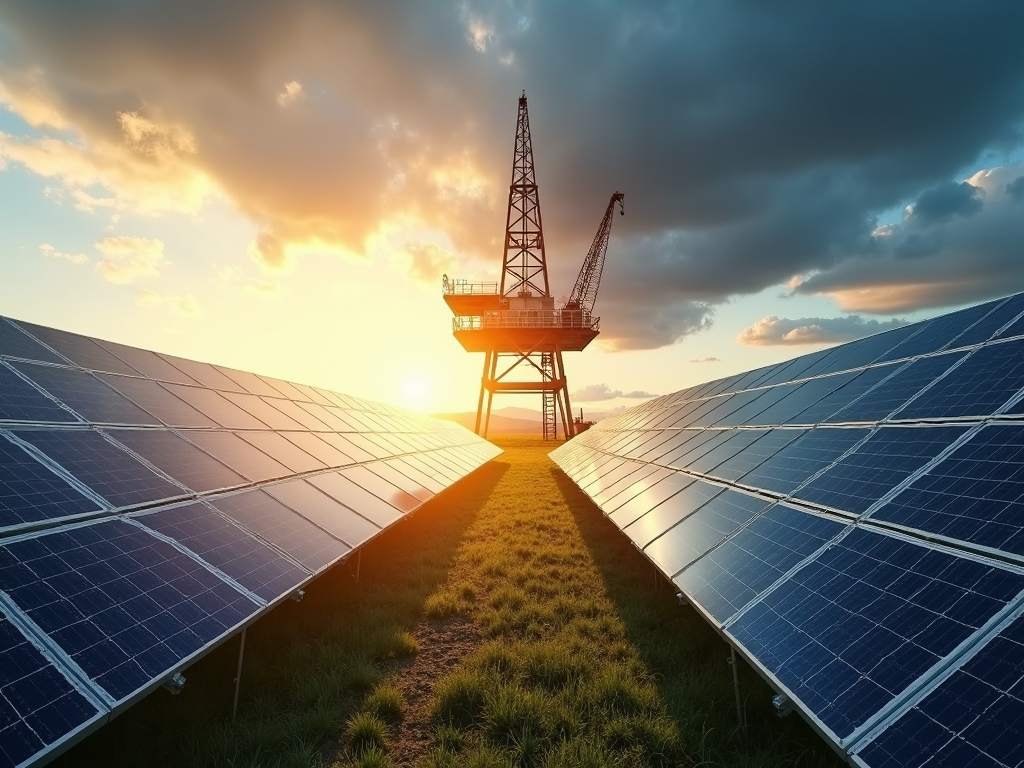Global investments in renewable energy have reached a turning point, increasingly surpassing those in fossil fuels. As the world moves towards a more sustainable future, we examine the dynamics and challenges that investors face in both sectors. The following chapters highlight the fundamentals of investment strategies and offer an economic perspective on the returns of both renewable and fossil energy sources.
Energy Alliances: The Complexity of Renewable and Fossil Fuel Investments

The dynamic landscape of the energy sector, characterized by the need to address the challenges posed by climate change, has led to a significant shift in investment patterns. At the forefront is the substantial increase in investments in renewable energy, driven by technological advances and the growing pursuit of climate neutrality. In 2023, an impressive amount of over 1.7 trillion dollars was invested globally in clean energy. This figure greatly exceeds investments in fossil fuels and reflects the increasing global focus on sustainable energy sources.
Renewable energies, supported by advancements in photovoltaic and wind energy technology, not only provide a reduction in operational costs but also play a crucial role in achieving climate goals. Germany, for example, has made tangible progress by successfully increasing the share of renewable energy in total energy consumption. The country aims for climate neutrality by 2045, thereby providing a strong impetus at both the national and international levels.
In contrast, investments in fossil fuels are declining, as the economic and environmental risks associated with their use become increasingly apparent. Although, during the transition, natural gas still plays a role in supply security, the high costs associated with fossil fuels and the growing political and social distrust present clear obstacles. Dependence on finite fossil resources carries significant risks, which can manifest in both price fluctuations and geopolitical instability.
Another significant hurdle is the issue of infrastructure in the renewable energy sector. Advances in storage capacity and smart grids are crucial for effectively managing the variable generation of solar and wind energy. Here, it is not just about promoting technological innovations, but also about fostering social acceptance for the land use required. Land occupation for renewable energy projects requires smart integration strategies to achieve social acceptance and successfully realize the energy transition.
In summary, the energy future is clearly oriented towards renewables. Despite challenges, technological innovations and policies supporting renewable energy provide a foundation for economic growth and global competitiveness. These trends paint a reassuring picture for a more sustainable and stable energy sector, the benefits of which extend far beyond environmental impacts and promise substantial economic and social benefits.
From Photovoltaics to Coal: The Economic Consequences of Evolving Energy Returns

The economic realities in the energy market are rapidly evolving, with a growing focus on renewable energies. A decisive factor is the profitability of different energy sources. Photovoltaics and wind energy emerge here as pioneering solutions for a sustainable future. Photovoltaic technologies have seen significant cost reductions in recent years. Between 2010 and 2020, the prices of photovoltaic modules dropped by as much as 90%, bringing the costs of electricity production from new installations to a competitive level. Large solar plants can already produce electricity at costs of 5-7 cents/kWh. This way, not only attractive returns of 5-8% are achieved, but also stability is ensured through feed-in tariffs guaranteed by the state, which are valid for over 20 years. These feed-in tariffs provide significant planning certainty, especially when global electricity prices are rising. Additionally, there are tax advantages for investors through depreciation possibilities and tax deductions for investments, which increase interest in photovoltaic investments.
At the same time, wind energy has proven to be equally economical. Companies like Vestas Wind are seeing growing demand, confirming that renewables are the most profitable choice for future-oriented investments.
On the other hand, fossil fuels, despite their historically low entry level, face challenges. The costs of electricity production vary widely, from 3 to 7 cents/kWh for coal-generated electricity and from 6 to 9 cents/kWh for gas. However, these figures can be misleading, as they do not account for external costs such as environmental and health damages that are increasingly influencing political decisions. These fossil resources are also subject to growing pressure from CO2 reduction policies and depend heavily on global market conditions, making returns volatile and uncertain.
The comparison shows a clear shift in terms of cost efficiency and risk profiles. Renewables are not only already cheaper in many regions compared to fossil alternatives, but they also feature a better risk profile. The political and regulatory risks associated with fossil fuels make renewable investments not only environmentally sensible but also economically profitable. The ecological nature of renewables, moreover, adds to the positive return by significantly contributing to the reduction of greenhouse gas emissions.
In conclusion, it can be stated: Renewable energy sources offer clear financial advantages, which are supported both by current cost efficiency and positive future prospects. Fossil fuels are losing appeal, not only in terms of purely economic indicators but also due to their problematic ecological and long-term regulatory implications.